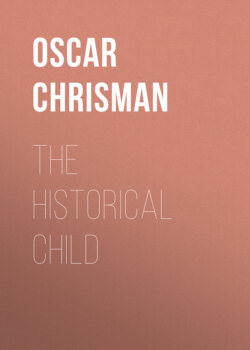Читать книгу The Historical Child - Oscar Chrisman - Страница 11
На сайте Литреса книга снята с продажи.
Food and Drink.
ОглавлениеTable of Contents
There was quite a variety of foodstuffs in Mexico. Maize was the principal product but also there was great use made of other grain, yams, and beans, and there were fruits, as the banana and plantain. Their supply of meat was obtained very greatly from the game animals, among which were deer, wild hogs, rabbits, quails, pigeons, ducks, turkeys, and geese. Turkeys, ducks, and geese were domesticated, having been raised for their feathers as well as for food. Fish was another important article of food and both salt water and fresh water varieties were procured in abundance.
"Miscellaneous articles of food, not already spoken of, were axayacatl, flies of the Mexican lakes, dried, ground, boiled, and eaten in the form of cakes; ahuauhtli, the eggs of the same fly, a kind of native caviar; many kinds of insects, ants, maguey-worms, and even lice; tecuitlatl, 'excrement of stone,' a slime that was gathered on the surface of the lakes, and dried till it resembled cheese; eggs of turkeys, iguanas, and turtles, roasted, boiled, and in omelettes; various reptiles, frogs, and frog-spawn; shrimps, sardines, and crabs; corn-silk, wild-amaranth seeds, cherry-stones, tule-roots, and very many other articles inexpressible; yucca flour, potoyucca, tunas; honey from maize, from bees, and from the maguey; and roasted portions of the maguey stalks and leaves."6
There were three meals a day, morning, noon, and night, and among the higher class, at least, banquets and feasts were quite numerous. The food was cooked and eaten from pots, bowls, and dishes of pottery. Maize, when green, was boiled and eaten, as roasting-ears with us now, and when dry it was sometimes parched or roasted. It was usually ground into meal and prepared in the form of cakes. To prepare the meal, the grain was thrown into boiling water, in which, lime had been placed, and then the hull was removed. It was then washed and ground on grinding-stones, called metlatl, and then kneaded and rolled into cakes and baked, there having been many kinds of cakes. The meal was also boiled and made into porridge or gruel. Beans were boiled when green and also when dry. Meats were stewed, boiled, and roasted. Pepper was quite freely used, as was also salt. Fruits were eaten raw, although some, as the plantain and banana, were roasted and stewed.
There were two national drinks, octli and chocolatl, now known as pulque and chocolate, the first an intoxicant made from the maguey and the second from the cacao. There were other fermented drinks prepared from grain, and a kind of mushroom was used to put into drinks to make them more intoxicating. Intoxication was excusable in older people but the young people were severely punished for it and even in case of intemperance death was the punishment paid to the young while with the older persons only loss of rank and property was the punishment.
Tobacco was used by the Mexicans, having been smoked in pipes or in the form of cigars, and also it was made into snuff and used. "A kind of chewing-gum was prepared from resin or bitumen, though its use, at any rate in public, was confined by custom to unmarried girls."7
Human flesh also was eaten. This was not used as a common food but as a religious rite. The sacrifice was made on an elevated place and after the victim's heart was taken out as an offering to the gods, and if a warrior his head was taken off to be preserved as a trophy, the body was then cast down the steps and taken by minor priests and prepared for the table as other animals. A thigh was sent to the king's palace and the remainder was taken to the home of the warrior who captured the victim or if a slave to the house of the owner, who had the human flesh prepared with other dishes and served up in an entertainment to his friends. "This was not the coarse repast of famished cannibals, but a banquet teeming with delicious beverages and delicate viands, prepared with art, and attended by both sexes, who, as we shall see hereafter, conducted themselves with all the decorum of civilized life."8
Although the eating of human flesh by the ancient Mexicans was not merely to satisfy the appetite for such food but in obedience to religion, yet there must have been quite a good deal of partaking of it as the number of human sacrifices each year was very great. Too, must be kept in view, the sacrifices included men and women, quite often young people, and likewise children, even infants. One peculiar custom was that the giver of the feast where the body of a human sacrifice was served did not partake of the flesh of his own captive, having been disbarred from this because he was supposed to stand to the victim in the relation of father to son.
